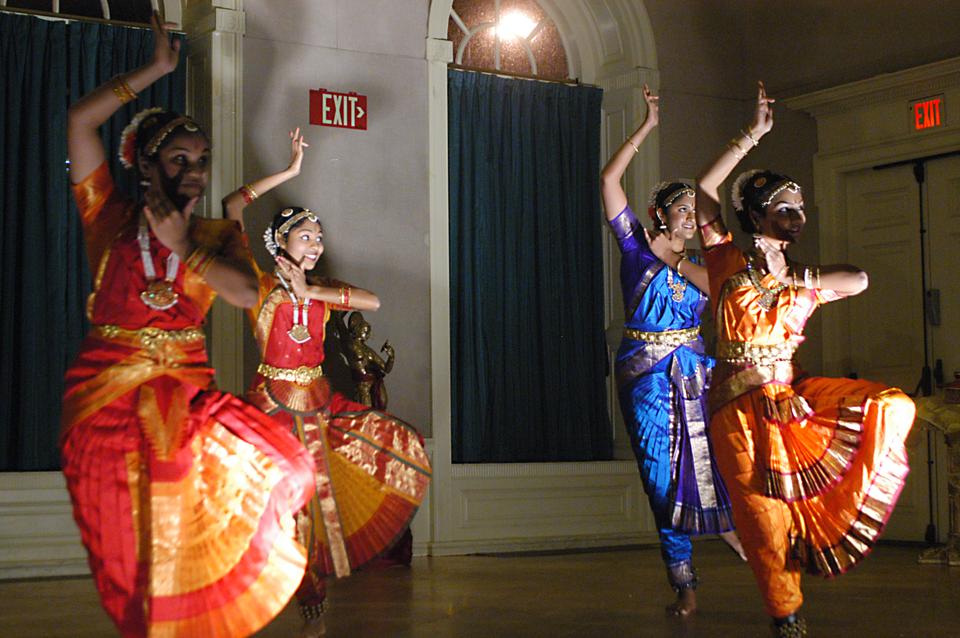
News
Cambridge Residents Slam Council Proposal to Delay Bike Lane Construction

News
‘Gender-Affirming Slay Fest’: Harvard College QSA Hosts Annual Queer Prom

News
‘Not Being Nerds’: Harvard Students Dance to Tinashe at Yardfest

News
Wrongful Death Trial Against CAMHS Employee Over 2015 Student Suicide To Begin Tuesday

News
Cornel West, Harvard Affiliates Call for University to Divest from ‘Israeli Apartheid’ at Rally
Ethnic Art Bypasses Boundaries
The South Asian art community reaches out to diverse audiences

November 5 marked the start of the Hindu festival of Diwali, the most important festival in the Hindu calendar. Diwali—which ended November 9—coincided with a generous offering of South Asian cultural events at Harvard, including performances of dance and music by students and professional artists alike. But even without a major festival to catalyze it, the South Asian artistic community is one of the most active and all-encompassing on campus.
South Asian art at Harvard enjoys a raised profile as a result of the sheer number of student groups devoted to its promotion and performance. Given the great regional variation between art forms of the Indian subcontinent, it is not surprising that there is such a wealth of groups on campus. What is perhaps more surprising is that each group manages to maintain its own identity while still collaborating on blockbuster shows like the annual “Ghungroo” performance. Nicolas J. Roth ’11, former cultural chair of the South Asian Association (SAA), said his role involved organizing a variety of events from Bollywood movie screenings to talks by contemporary South Asian authors.
One of the best-represented forms of South Asian art on campus is dance—both classical and fusion, or a blend of Eastern and Western styles. Janani A. Raveendran ’12 is heavily involved in South Asian dance at Harvard. She explains that South Asian Dance Company (SADC) does only fusion, while Harvard Deepam is a classical group that performs Bharatanatyam, a more classical form. Despite these distinctions, Raveendran says, “Each dance group has a dedicated show in which they really get a chance to shine.” For SADC, this comes with the annual fall show “Raunak,” which is Harvard’s only intercollegiate South Asian dance show. For Deepam, it was “Kalpanam, The Rebirth of Love,” a showcase of classical Indian dance that occurred November 6.
Of the South Asian students at Harvard who are classically trained in any of their culture’s art forms, Raveendran says, “The students with classical training are in the minority.” This explains the popularity of “Ghungroo,” SAA’s annual cultural show that typically takes place in March, in which students can perform with no prior training. Yet being of South Asian descent is not a prerequisite for participation either. Roth, for example, is not Indian. He says of ethnic organizations in general, “People often feel they are marked as outsiders.” But this has not been his experience with South Asian arts on campus. “There have been years in which there are more non-Indian than Indian performers in ‘Ghungroo,’” Roth says.
In addition to dance, students are committed to making the music of the Indian subcontinent more of a presence. Sangeet is a student organization devoted solely to South Asian classical music, which puts on concerts and invites famous musicians to perform. On November 6, Zakir Hussain, India’s foremost player of tabla—a North Indian percussion instrument—gave a concert in Sanders Theatre in aid of the Pakistan floods.
That same evening, classical dance groups came together to put on “Kalpanam,” a showcase of classical dance styles of India. The show included performances in Kathak, the best-known North Indian dance form, as well as Bharatanatyam, which is a widely practiced dance from southern India. Alongside these more familiar styles was a remarkable solo performance of the more obscure dance form of Kuchipudi, also from southern India, by Juhi Kuchroo ’13. Kuchroo finished the Kuchipudi piece in the traditional manner, masterfully executing complex footwork while balancing on a large shallow plate.
“Kalpanam” concluded with a performance by Deepam, who have performed at intercollegiate events and competitions. The fast paced and artfully choreographed “Thillana,” another traditional Bharatanatyam item, was a fitting end to the high energy and exuberant evening of dance.
There is an inherent paradox in the performance of all ethnic art forms. Ethnicity is what defines the art; yet to appreciate it, viewers must transcend ethnic boundaries. Students involved with South Asian art on campus work to ensure that the traditional or ethnic nature of the art does not alienate those from different backgrounds. When asked if friends from outside the South Asian community were supportive of his commitment to SAA, Roth says that sometimes, “They just feel awkward.” But judging from the warm applause from the decidedly mixed audience at “Kalpanam,” this feeling is easily eradicated.
Want to keep up with breaking news? Subscribe to our email newsletter.
